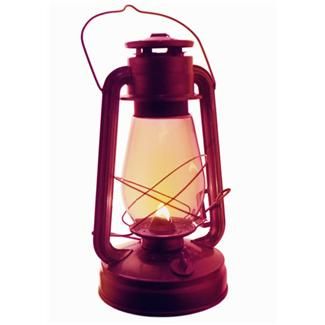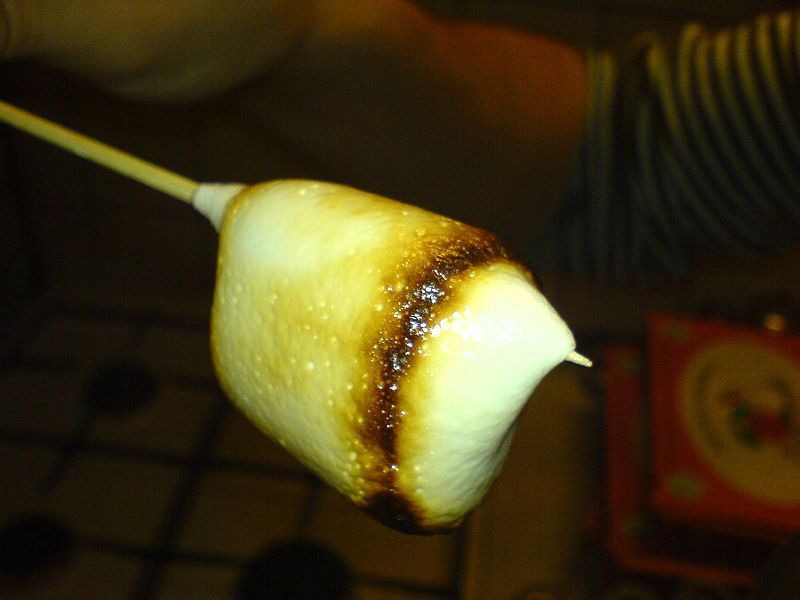

Mirah’s (mwelday) Interview with John Shors
Several years ago my husband and I moved from Hawaii to Japan and I was a little obsessed with novels set in the Pacific. And being a Navy spouse, a book with a military connection would be the jackpot. I found ‘Beside a Burning Sea’ by John Shors, a novel set during World War II and centered on an American nurse and an injured Japanese soldier. I was so impressed by the book I had to read more. I ordered ‘Beneath a Marble Sky’ and was blown away. I thought it was remarkable and I quickly added ‘visit the Taj Mahal’ to my bucket list. Put simply, John can capture the essence of a location and characters in a way that allows readers to connect with people and places much different from themselves. He has quickly become one of my favorite American writers and I know his books will stand the test of time. In addition to these two works, John is the author of ‘Dragon House’, ‘The Wishing Trees’ and ‘Cross Currents’, which will be discussed in this Q & A.
I am so honored John agreed to answer some questions about ‘Cross Currents’, his most recent work. The novel’s setting is beautiful Ko Phi Phi, Thailand and he weaves the stories of Americans Patch, Ryan, and Brooke with locals Lek, Sarai, and their family. All of the characters deal with family conflict and find themselves fighting for love, family, and survival. I was wary at first to read a fictional account of the Indian Ocean Tsunami, not sure how someone could write about such a tragedy and remain respectful to those who experienced it. I shouldn’t have been worried; John handled the scenes with grace and sensitivity.
MIRAH: Before we get to ‘Cross Currents’ could you describe how you became a novelist? How did you get on that path? 
JOHN: I grew up reading several novels a week and at some point (I believe in high school) I decided that I wanted to become a novelist. Of course, it’s a tough profession to break into, so the process of doing so wasn’t an instant one. After graduating from college, I became an English teacher in Japan, and later a newspaper reporter in my hometown of Des Moines. I worked on my first novel, ‘Beneath a Marble Sky’, at night and during the weekend. Under those confines it took me five years to finish the novel, but fortunately, it was embraced by readers after its publication and became an international bestseller. The success of ‘Beneath a Marble Sky’ (which tells the remarkable story behind the creation of the Taj Mahal) allowed me to quit my day job and become a full-time novelist.
MIRAH: I love to travel and your novels are set in various countries and cover such diverse topics. I really enjoy this because it allows to me to travel to new locations without even leaving my house! How do you select your next book topic and/or location?
JOHN: Well, first of all, thank you for the compliment. In terms of how I select my next novel, I identify a place somewhere on the globe that I have been to and believe is special. I then try to wrap a story around that setting. For instance, I am currently putting the finishing touches on a novel about Angkor Wat, which is a legendary temple located in Cambodia. One of my goals as a writer is to take my readers on a journey to some of the world’s most beautiful and unique places. These are the kinds of novels that I like to read, and I couldn’t imagine writing about anything else.
MIRAH: Your novels seem very comprehensive because you tap into local mannerisms, dialects, and customs. What is involved in your research for a novel?
JOHN: I spend quite a bit of time within each setting that I end up writing about. I get to know the local language, food, music, dance, topography, climate, people, etc. I don’t stay at tourist hotels, but at small places near where the locals live. It’s really important to me that my novels accurately portray the culture that I am trying to reincarnate on the page. Spending several weeks at a particular site allows me to create novels that are authentic.
MIRAH: I love that you write in a way that brings the location to life and it becomes another character. But in ‘Cross Currents’, Thailand (specifically Ko Phi Phi) and the ocean both become characters. How did you prepare to write about the tsunami?
 JOHN: I first visited Ko Phi Phi in 1994–long before I was a novelist. Upon landing on the island’s shores, I was convinced that I had stumbled upon one of the most beautiful places on Earth. I was lucky to return to the island several times after that. I fell in love with the place and the people. Years later, when the tsunami tore through Ko Phi Phi, I was quite upset. I wanted to help, but wasn’t able to return until long after the event. When I did get back, I spoke with locals who had survived the event, had stayed, and were rebuilding. I was so impressed with their stories, with their perseverance, that I decided to write a novel that would bring the strength of the human spirit (which they all displayed in such a profound way) to vivid life. Once I began the novel, I again returned to Ko Phi Phi to interview survivors, ensuring that I was accurate in terms of how the tsunami swept across the island.
JOHN: I first visited Ko Phi Phi in 1994–long before I was a novelist. Upon landing on the island’s shores, I was convinced that I had stumbled upon one of the most beautiful places on Earth. I was lucky to return to the island several times after that. I fell in love with the place and the people. Years later, when the tsunami tore through Ko Phi Phi, I was quite upset. I wanted to help, but wasn’t able to return until long after the event. When I did get back, I spoke with locals who had survived the event, had stayed, and were rebuilding. I was so impressed with their stories, with their perseverance, that I decided to write a novel that would bring the strength of the human spirit (which they all displayed in such a profound way) to vivid life. Once I began the novel, I again returned to Ko Phi Phi to interview survivors, ensuring that I was accurate in terms of how the tsunami swept across the island.
MIRAH: You traveled to Ko Phi Phi before and after the tsunami. Can you describe how your feelings were different each time?
JOHN: Ko Phi Phi is one of those places that was truly a paradise. It still is, though there are many more hotels, boats, and people than there used to be. It’s been a bit painful for me to witness this transition, but again, the island remains a special place. The waters, the cliffs, and the people are unchanged. In terms of my post-tsunami experience, I was impressed with how the Thais had rebuilt everything. Something like 7,000 tons of debris were removed from the bay by hand–an amazing accomplishment. I was also delighted to see children from all corners of the world running along the beach, laughing with each other.
MIRAH: Patch and Ryan seem to be two very different brothers in the beginning but throughout the book I perceive them becoming more alike. Did you know the fate of both brothers at the start or did that reveal itself to you as you wrote?
JOHN: I wasn’t sure how the relationship between Patch and Ryan would evolve. I wanted there to be conflict and love within their relationship. I wanted it to be tested. But I had no idea how the tsunami would affect them. It really wasn’t until I started writing those final scenes that I decided what to do.
MIRAH: The love/hate relationship between locals and tourists seems to exist everywhere, to some degree. Lek and Sarai love living on Ko Phi Phi and understand tourism keeps them there but they obviously work day and night to make ends meet and they aren’t always treated well by tourists. During my trip to Ko Samui, I felt very welcomed by the locals but at the same time I felt tourism was taking over the island and I felt some guilt about that. How do you feel about the small islands of Thailand becoming more dependent on tourism?
JOHN: I’ve been to many places where tension exists between locals and tourists. I don’t feel that way in Thailand. I’m not sure why this is other than the Thais don’t take life too seriously and realize that tourist dollars help them build new schools, hospitals, and roads. Yes, tourism leads to the creation of hotels and an infrastructure to support countless foreigners. But that same tourism enables the Thais to maintain good jobs, to live in beautiful places.
MIRAH: Which character did you enjoy writing about the most in ‘Cross Currents’ and why?
JOHN: My favorite characters were the Thai characters. I enjoyed writing about the three-generational family that runs a resort on the island. I tried to bring the joys and difficulties of their lives to life, as I had witnessed those highs and lows during my travels to developing countries. Such families often struggle to find balance. For instance, the Thai mother and father in ‘Cross Currents’ struggle with the fact that they need their children to work in order to help pay all of their bills. Of course, they want their children to go to school, to play and be happy. But they also depend on the productivity of their children. Consequently, they often muse over the finding right sort of balance between work and play. For me, as a writer, putting such issues down on the page allowed me to examine them within my own life and family.
MIRAH: Through reading your novels I know you donate to various charities, including proceeds from your books, and try to get the word out about the charities you support. What groups are you currently involved with and how can we learn more about them?
JOHN: All of my novels have gone to support various charities. I’m most proud of the work that I have done with the Blue Dragon Children’s Foundation, which is located in Vietnam, and supports homeless children. The sales of my novels have allowed me to help buy complete sets of school books for about 1,300 homeless kids in Hanoi. This outcome has thrilled me. Additional information on the charities I support can be found on my website at www.johnshors.com.
MIRAH: And one final question, can you give us a sneak peek into your next novel, ‘Temple of a Thousand Faces‘?
JOHN: ‘Temple of a Thousand Faces’ is an epic work of historical fiction centered around Angkor Wat. It will be full of action and intrigue, love and betrayal. I’m quite excited about it, though the novel won’t come out until February, so I have to be patient. For updates on that book, and other elements of my writing life, please friend me on Facebook or Twitter.
In closing, I would like to thank John for his time and willingness to answer my questions. I am a passionate reader and it’s a dream come true to be able to connect with a writer I admire. It’s really been exciting for me to have the opportunity to communicate with him about ‘Cross Currents’. So, if you’re in the mood to learn about another culture, delve into the emotions of the human spirit and be transported to amazing locations, pick up ‘Cross Currents’ or another of John’s books. Trust me, you won’t be disappointed.
To learn more about John and his books, visit his website at www.JohnShors.com or follow him at facebook.com/JohnShors or twitter.com/JohnShors.









 Studies have shown that kids spend half as much time outdoors as they did 20 years ago and only 25% of kids spend significant time outdoors compared to 75% in the past. Kids who spend more time outdoors are healthier, more physically active, exhibit better mental concentration, and display less aggressive tendencies. So this is a great opportunity to turn off the Xbox, walk away from the TV, and put the cell phone in a drawer for one night in order to spend quality time with those you love and experience the awesomeness of nature.
Studies have shown that kids spend half as much time outdoors as they did 20 years ago and only 25% of kids spend significant time outdoors compared to 75% in the past. Kids who spend more time outdoors are healthier, more physically active, exhibit better mental concentration, and display less aggressive tendencies. So this is a great opportunity to turn off the Xbox, walk away from the TV, and put the cell phone in a drawer for one night in order to spend quality time with those you love and experience the awesomeness of nature.
 and arranging them into beautiful displays on construction paper.
and arranging them into beautiful displays on construction paper.




























